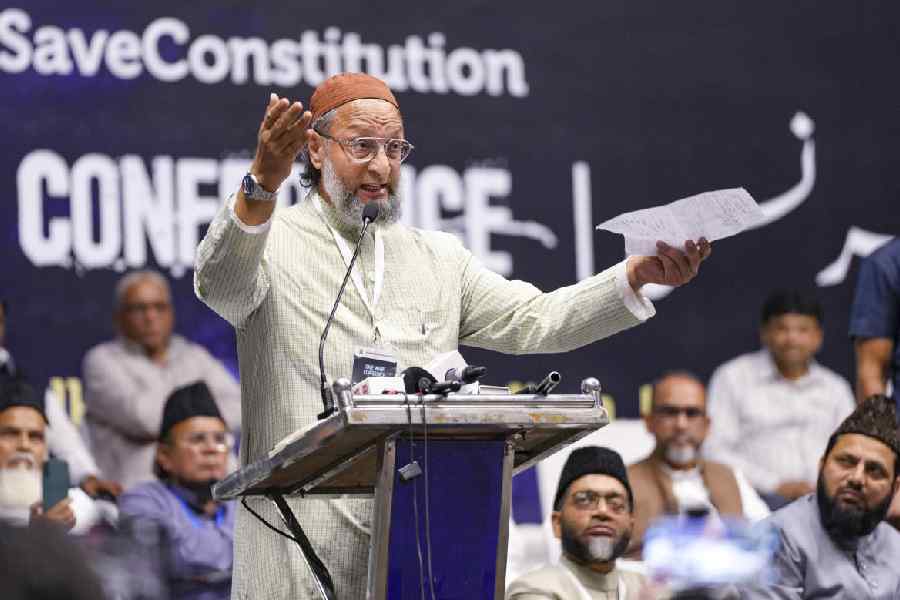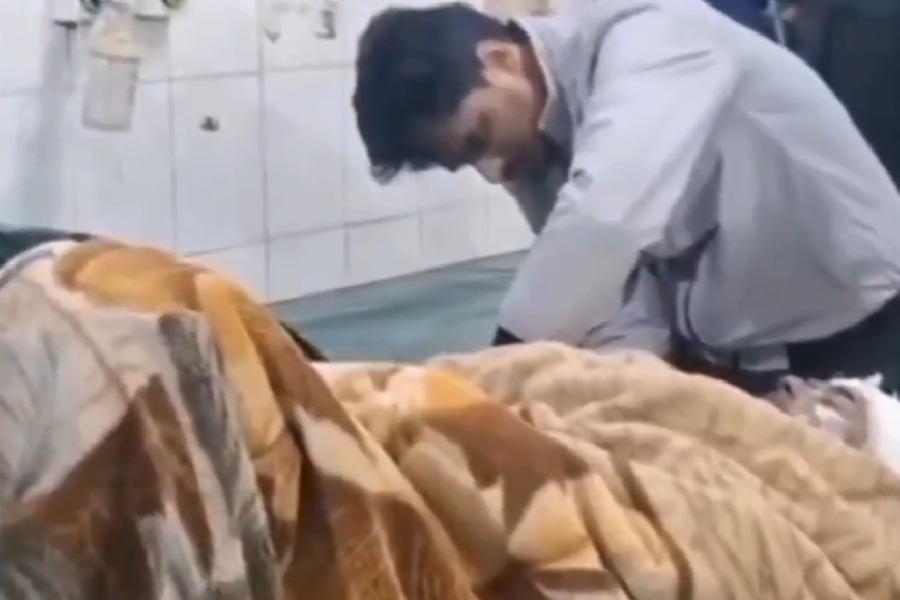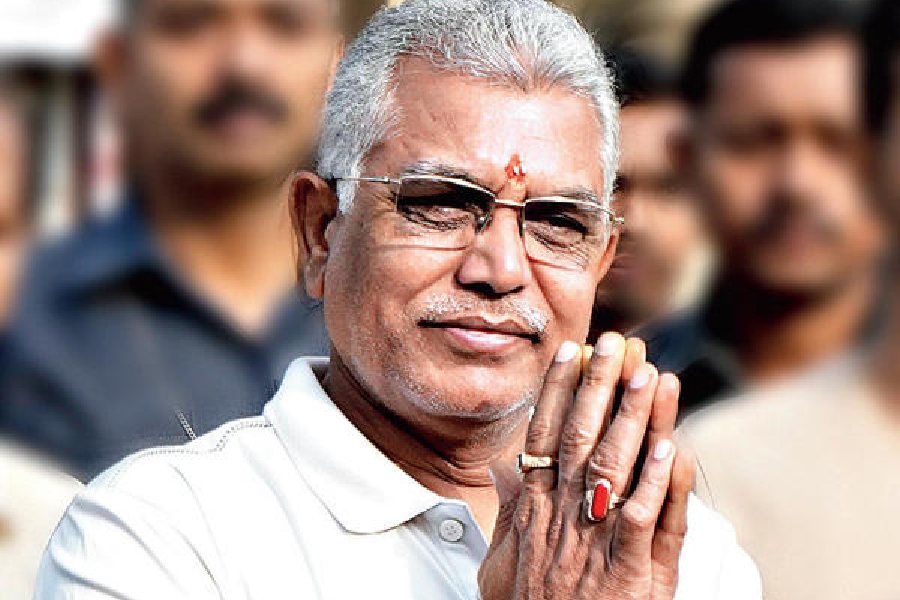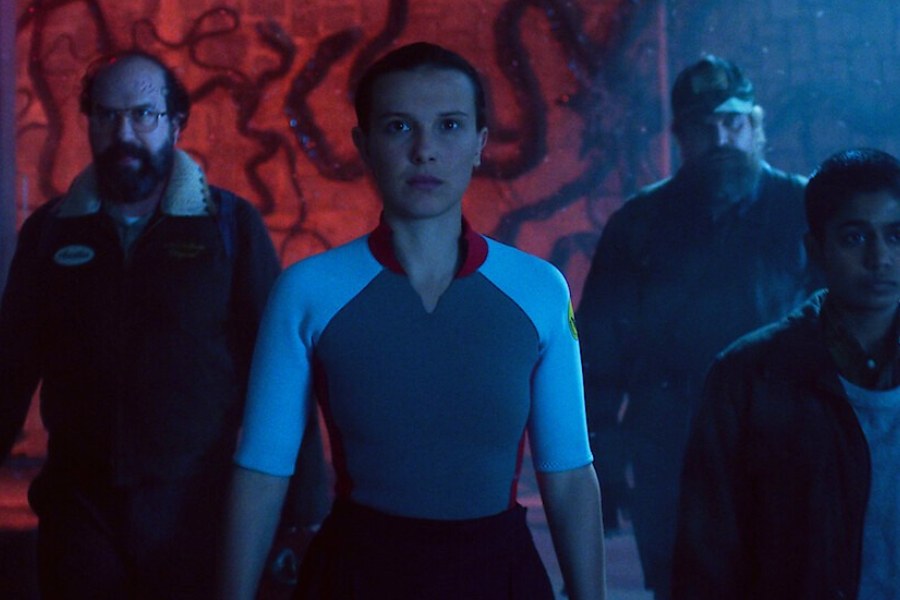 |
The local people who frequent the area have begun referring to it as the “thakur-der gallery”. An abandoned warehouse on the premises of Rabindra Sarobar (what many of us just know as the Lakes) has been cleared and spruced up to serve its new function as a gallery for installation art. A recent report (“Godown to art gallery”, The Telegraph, Metro, November 12, 2012) talks of how this initiative has made available 3,000 square feet of gallery space with 30 ft ceiling height, along with 70,000 sq ft of open grounds in front, with a huge potential for displaying new kinds of public art. It mentions that the director of Experimenter, the city’s small avant-garde gallery at Gariahat, will take charge of curating contemporary art exhibitions in this refurbished space. What the report fails to say, though, is that a selection of nine Durga images from this year’s festival — in varying experimental media and iconographies — have already taken their place inside the warehouse as the first ‘art objects’ of this gallery. To me, this omission in the report is as telling as the lack of publicity surrounding the forming of what we may think of as the city’s first museum of collectible Durga Puja ‘art’.
It has left a set of questions wide open. While they have secured their artistic renown in the Puja awards circuit, how effectively can these images become ‘works of art’ in an exhibition gallery? In public perception, can they ever transcend their identity as ‘thakurs’ and be viewed as works of public sculpture? Is there a post-festival life to these laboriously crafted images and the elaborate installations and tableaux that are created around them? When the gallery space and its grounds are given over to other exhibitions, what will happen to these objects, many of which have nowhere to return? Are they likely to find more permanent homes in art collections or in other public and institutional spaces of the city? Much of this remains impossible to think through. There is no professional curator who conceived of this exhibition, or made a well thought-out selection of which Durga images from this season were to be brought together here as a coordinated group. Prior planning may have enabled larger selections of pandal installations, from the past and the present, to have also been collected and presented, especially in the vast grounds outside. Like, one or two of the giant butterflies, made up of metal-studded black wood, steel rods and wires and gold embossed cloth that Bhabatosh Sutar created at Naktala Udayan Sangha Puja this year, in synchrony with the pastel-hued butterfly-winged Durga that has come into the gallery. Or, perhaps, a section of the tower made of delicately-patterned ceramic vases and pots that Subodh Ray made in the narrow alley of Nalin Sarkar Street at Hatibagan — which, on the eve of Lakshmi Puja, stood waiting to be sold off at a throwaway price to a suburban Kali or Jagaddhatri Puja pandal, with few takers because of the cost and expertise involved in putting up such an intricate structure. Even wooden, ceramic or fibre Durga images from earlier years, that are gathering dust in artists’ own studios or Puja committee store-rooms, could have been searched out and reassembled in these gallery premises. Of course, it takes an irrepressible Puja aficionado to keep wishing for more, when the very idea of such a Durga Puja gallery is a rarity and has taken so many years to come about.
The notion of such an exhibition came up spontaneously in the middle of this year’s Durga Puja. Vivek Bharadwaj, the dynamic CEO of the Kolkata Metropolitan Development Authority, who is the main brain and energy behind this project, says he had little interest in public art and knew next to nothing about Calcutta’s rich abundance of Durga Puja designers and ‘theme’ productions. His main concern is with urban infrastructure and renovation, and his special agenda is to beautify the city’s parks and water-bodies. It was as a part of his larger endeavour of transforming the social and physical environs of the Lakes (which falls under the charge of the sister organization of the Kolkata Improvement Trust) that he began working since September on converting the unused warehouse into a one-of-a-kind exhibition space. Like the revived fountains, the introduction of nature-photography walks, and Sunday evening live-music by the Lakes, the opening of what will be called the warehouse gallery is intended to attract new social groups to these precincts. The aim, he says, is to let good footfalls drive away the bad ones. As he toured the Pujas with the artist, Shuvaprasanna, his plans began to unfold, with the same frenzy as the festival days, of bringing a selection of Durga images and pandal installations into this lakeside gallery.
The Bosepukur Shitala Mandir Puja was where they made their first choice, and where they came across members of the Puja committee who head a larger city-wide consortium called “Forum for Durgotsav”, who helped mobilize other award-winning ‘theme’ Pujas in handing over their works for post-Puja display. On the afternoon of Ekadashi, the Bosepukur Durga ensemble (made by the Kumartuli art-college graduate, Naba Pal) was the first to arrive at this Lake destination, with all the festival feel of an immersion procession. Over the next few nights, eight other ‘art’ Durgas came into this empty warehouse from all over the city, from Barisha to Telengabagan, from Chetla to Lake Town, traveling at times via the river banks where the ritual was maintained of the immersion of a smaller clay vessel or image. Clearly the new political backing and publicity networks of many of these Pujas, had much to do with this selection. But, so had other smaller factors. A security guard overseeing this warehouse told me how it was he who had suggested to Bharadwaj-sir that Sanatan Dinda’s stylized and signed Durga panel also be brought over from the 95 Pally Puja of Jodhpur Park. The coming together of such a gallery of goddesses happened (it would be good to believe) in the same populist spirit as the Pujas.
For Bharadwaj, the essence of this project lies less in the objects on display, more in the intangible gains of sustaining the citizens’ pride and enthusiasm that are generated around the gala event of the Durga Pujas. Why does all the intensity of spectatorship have to begin and end with the festival? Why, after their fabulous metamorphosis into architectural replicas and art and craft installation sites, do streets invariably return to their drab, ugly appearances? Can the festival aesthetic not be stretched out to envelop other spaces and times in the city? Dusk had turned gently into evening, as I sat talking on the banks of the Lakes to Vivek Bharadwaj and his close associate, the environmentalist, columnist and corporate activist, Mudar Patherya. The two had just completed a meeting with a gathering of Puja committee members, who had been busy chalking out their share of spaces on the warehouse floor, with the same avid territoriality with which one parar pujo competes with another. Everything was happening in the name of the Puja committees. Where in all this were the artists who were meant to recreate the ‘magic’ around their creations in this new setting? It spoke a lot about the ‘art’ status of these images, that, barring one, none of their makers were present to guide the decisions about how and where their works were to be set.
Yet there was no dearth of curatorial ideas among this motley group of Puja organizers. I heard animated discussions about the need for individualized lighting for each image within the plywood enclosures to be made for them, and about playing here the special theme-music by Tanmoy Bose for the two Sanatan Dinda productions at the Barisha and Jodhpur Park Pujas. Their enthusiasm spilled over into the conversations of Bharadwaj and Patherya. Both were equally brimming with ideas — about audio-tracks that would recreate the everyday sounds of the Puja city, and others that would tell the stories of these Puja clubs; about students who would be trained to be guides for this Puja-themed display; about children’s workshops in clay idol-making or photography exhibitions on the Durga Pujas that could be held in parallel in the open grounds. There was a lot of talk, too, about the kind of Puja-theme merchandising that could be developed for sale, on products ranging from key-rings and magnets to lamp-shades and saris. Would that not be a bit excessive, I hesitantly asked. Isn’t there already an over-kill of the commercialization of the festival? They replied (with the same verve as the many advertising professionals I have interviewed) that we have not even begun to tap the immense potentials that exist for the national and international marketing of this city festival.
At the end of the day, though, there were a series of political hiccups to be tackled. Suddenly, with a week to go for the scheduled opening of the gallery, the date for inauguration was brought forward from November 16 to 14, just to enable the minister, Bobby Hakim, to do the honours before he went on his London visit. Then, equally suddenly, the opening was indefinitely postponed because Mamata Banerjee herself wished to inaugurate it and would have to schedule the date to do so. I am left asking — what hopes are there for this novel exhibition of festival ‘art’ if it cannot outgrow the whims of the chief minister and her infantile obsession with the fanfare of inaugurations? And how will these images ever graduate from idols to art-objects if no better title can be touted for the show than the one I was told, “Ma Phirey Elo (Ma Returns”)?










